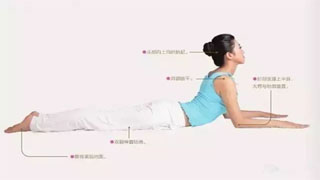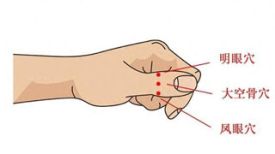
Leg pain is a common problem, which can be mild or severe and affect daily life. Before discussing stretching exercises, it is important to understand the common causes of leg pain to avoid exacerbating the condition through incorrect movements.
Common causes of leg pain:
1. Muscle strain: Muscle fibers are damaged, and stretching immediately after injury may worsen. It can be relieved after 48-72 hours.
2. Muscle spasms: often caused by dehydration, fatigue, and electrolyte imbalance, gentle stretching can relax muscles.
3. Sciatica: It is caused by compression or stimulation of the sciatic nerve in the lower back, which may result from poor sitting posture. Stretching can reduce pressure.
4. Sedentary sitting: leads to reduced blood flow in the legs, accumulation of lactate and carbon dioxide, causing pain.
5. Osteoarthritis: Wear of cartilage at the end of the bone, limited joint movement, commonly seen in elderly people and athletes.
6. Muscle soreness after exercise: Excessive or prolonged exercise may cause it, and stretching can help alleviate it.
7. Peripheral arterial disease: Arterial stenosis leads to reduced blood flow in the lower body, which is more pronounced during physical activity.
8. Deep vein thrombosis: A blood clot in the deep vein of the leg, causing local pain, swelling, and fever, requires immediate medical attention to prevent the thrombus from moving.
9. Stress fractures and tibial splints: Long distance running and repetitive jumping activities can easily cause them, and stretching should follow the guidance of a physical therapist.
10. Varicose veins: Blood accumulation caused by damaged venous valves, which may require resection in severe cases.
11. Bruising: Small blood vessels are damaged and ruptured, causing blood leakage and accumulation. Although it can heal on its own, it may continue to cause pain, which can be relieved by gentle stretching.
12. Neural compression: such as compression of the peroneal or tibial nerves, resulting in stinging, numbness, or stabbing pain.
13. Growing Pains: Commonly seen in children for unknown reasons, gentle leg stretching may alleviate them.
14. Muscle imbalance: Cross joint muscle strength or tension imbalance can alter movement patterns, leading to leg pain.
15. Medical condition: diabetes, autoimmune diseases and nervous system diseases may cause leg pain.
Persistent or severe leg pain should be diagnosed by professionals and appropriate treatment methods should be selected.
Stretching rehabilitation exercise methods for treating leg pain:
1. Assist in stretching the leg muscles
Target muscle: Leg muscles
Step: Sit on the ground, straighten your legs, wrap a belt around your feet, lie down, lift your legs and pull them vertically with your arms, hold for 30-60 seconds, and repeat the process of changing sides.
Benefits: Gentle stretching, suitable for all levels of exercisers, can identify and repair flexibility imbalances.
Tip: If your legs are trembling or burning, you should relax and try different leg positions to keep your shoulders relaxed.
2. Prone quadriceps stretching
Target muscles: quadriceps femoris, hip flexors
Step: Lie on your back, place your head on your forearm, bend your right leg and use your hands to grab your ankle and pull it towards your buttocks. Hold for 30-60 seconds and repeat the process by changing sides.
Benefits: Comfortable stretching, aligning hips and knees, suitable for long-term maintenance.
Tip: Keep the neck relaxed, use towels or other aids, and avoid excessive stretching.
3. Stand up and stretch your calves
Target muscles: gastrocnemius, soleus
Step: Stand at the edge of the steps, let your heels move freely, use your weight to relax your heels, and hold for 30-60 seconds.
Benefits: Easy to use, weight stretching can be done anytime, anywhere.
Tip: Slightly bend the knee to stimulate the soleus muscle, which can be done on one leg, using the arm to maintain balance.
4. Half kneeling hip flexor muscle extension
Target muscles: hip flexors, quadriceps femoris (rectus femoris)
Step: Kneel on the mat, take one leg forward and bend, relax your hips and feel the stretch, hold for 30-60 seconds, and repeat with a different leg.
Benefits: Gentle hip opening, improved posture, and relief from prolonged sitting discomfort.
Tip: Adjust the position of the front and rear legs to increase stretch, keep the torso upright, and cross your arms behind you to stretch.
5. Sitting posture pear shaped muscle stretching
Target muscles: piriformis, gluteus maximus, gluteus maximus, gluteus medius
Step: Sit in a chair with your ankles crossed over your knees, place your hands on your ankles and knees, press down and lean forward, hold for 30-60 seconds, and repeat with a different leg.
Benefits: Can be done anywhere, relieve sciatica, and break sedentary habits.
Tip: When leaning forward, be careful not to bow your back, do not exert force to bend your legs, and twist your shoulders to increase stretch.
6. Stand up with IT belt stretching
Target muscles: ITB band, hip abductor muscle
Step: Stand against the wall, cross your right leg with your left leg, support the wall with your right hand, and push your hips towards the wall to feel the stretch. Hold for 30-60 seconds and repeat the process by changing sides.
Benefits: Easy to operate, can be performed at any time, and quickly relieves pain.
Tip: Maintain a right angle between the hips and shoulders, tilt the hips to deepen stretching, or do it independently.
7. Sitting adductor muscle extension
Target muscles: adductor longus, adductor brevis, adductor maximus
Step: Sit on the ground, bend your legs and press the soles of your feet together, grab your ankle and press your knee with your elbow, and hold for 30-60 seconds.
Benefits: Effectively stretches adductor muscles and groin, comfortable and simple, suitable for all levels of exercisers.
Tip: Sitting on a cushion is more comfortable. If you cannot maintain your posture, you can use yoga tiles or other techniques to keep your upper body relaxed.
8. Baby style (Balasana)
Target muscles: erector spinae, gluteus maximus, fascia lata, gastrocnemius, soleus
Step: Kneel down on all fours, sit on your heels, extend your arms forward, and keep your chest close to your thighs for 30-60 seconds.
Benefits: Relaxing and stretching, releasing tension in the buttocks and lower back, and relaxing the body and mind.
Tip: Place your arms on both sides to emphasize the muscles of your lower body, use a cushion to increase comfort, and inhale to relax.
9. Lie down with legs reversed
Target muscles: all lower body muscles
Step: Lie on your back against the wall, support your legs vertically against the wall, and hold for 3-5 minutes before lowering.
Benefits: Relax, promote blood circulation, relieve tension and stress.
Tip: Stretch your hips close to the wall, tilt your legs outward to stretch your adductor muscles, and do sleep aids before bedtime.
10. Hip bridge
Target muscles: gluteus maximus, hamstring, erector spinae
Step: Lie on your back, bend your legs, tighten your abdominal muscles, place your arms on both sides, lift your hips in a straight line with your heels, and repeat.
Benefits: Low tech and efficient hip strengthening exercises, no equipment required, suitable for the waist and back.
Tip: Use your knee to push your hand or use tools to increase hip joint, and pull your heel to exercise your leg muscles, which can increase difficulty.
11. Raise the calf
Target muscles: gastrocnemius, soleus
Step: Stand at the edge of the steps, move your heels freely, grab the armrest, straighten your legs and lower your heels, then tiptoe and repeat alternately.
Benefits: No need for equipment, stretching and strengthening, suitable for all levels.
Tip: Maximum range of motion, slow movement, can increase difficulty with dumbbells or one leg.
12. Ankle rotation
Target muscles: gastrocnemius, soleus, tibialis anterior, tibialis posterior, peroneal long and short muscles
Step: Sit down and straighten your legs, then turn your ankles clockwise and counterclockwise for 1-2 minutes each.
Benefits: Can be used anywhere, promotes blood flow in the lower limbs, and prevents DVT.
Tip: Barefoot or alternate rotation, draw large circles to increase stretch.
13. Asian squat
Target muscles: gluteus maximus, quadriceps femoris, hamstring, abductor, adductor, gastrocnemius, soleus, erector spinae
Step: Stand with feet apart, toes extended, knees bent and squat deeply, arms supporting knees, hold for a few minutes before standing up.
Benefits: Stretching lower body muscles, activating joints, and relieving discomfort from prolonged sitting.
Tip: Use heel pads to facilitate squatting, keep your chest straight to avoid bending over, and use steps or mats when tired.
14. Rolling of foam shaft
Target muscles: quadriceps, hamstring, gluteus maximus, abductor, adductor, gastrocnemius


